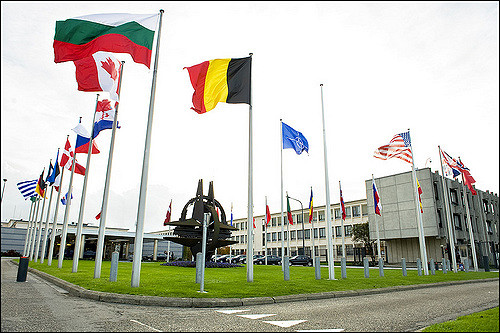Read Part 1 here
Due to the covert nature of human trafficking, quantitative data reflective of the exact scope and scale of this crime is hard to find. Furthermore, existing data and evidence of human trafficking in Canada overwhelmingly reflects Canada’s Aboriginal and First Nation women and youth as primary targets for coerced recruitment into the industry. More than half of all women trafficked in Canada are identified as Aboriginal and First Nation. The correlation between this phenomenon and the hundreds of missing and murdered indigenous women and girls across Canada presents significant safety and security concerns for all Indigenous people.
Part 2 of this article series discusses human trafficking in Canada, the overwhelming representation of Aboriginal and First Nation women in the industry and Canada’s National Action Plan in response to human trafficking.
Human Trafficking in Canada
Canada is identified as a source, transit and destination country for human trafficking victims for the purposes of sexual exploitation and forced labour. Across Canada, victims largely at risk include Aboriginal and First Nation women and girls, at-risk youth, newly landed immigrants, and those marginalized because of poverty and lack of secure financial incomes. Victims of labour trafficking often legally enter Canada from Eastern Europe, Asia, Latin America and Africa and are subsequently subjected to forced labor in a variety of different sectors including agriculture, construction and hospitality. Of the 330 human trafficking cases identified by the RCMP, 311 are domestic cases, occurring in and across Canadian cities and provinces. As of January 2015, the RCMP has reported 85 completed human trafficking cases where convictions were secured, and 151 individuals convicted of specific human trafficking or related offenses including forced confinement, sexual assault and procuring victims.
Human Trafficking involves constant violence, coercion and exploitation of victims. In Canada, human trafficking for the purposes of sexual exploitation occurs mainly through online chat sites, as well as on city streets. Toronto is described as a hub for human trafficking, which is not surprising given the allure and popular tourist attraction of Canada’s most renowned city, and the potential for attracting numerous prospective clients. Victim’s demographics are overwhelmingly defined as young females between the ages of 15 and 24 and possessing valid Canadian citizenship. The servicing of clients widely occurs in hotels and apartments throughout Canadian cities, as well as areas with poor security and law enforcement. Across Canada, charges for human trafficking have widely been laid in Alberta, Ontario and British Colombia.
Aboriginal and First Nation Women as Targets
In Canada, Aboriginal and First Nation women and girls are overwhelmingly targeted and affected by human trafficking due to widespread and longstanding rates of poverty, crime, high school drop out rates, alcohol and substance abuse, racism, marginalization, and poor living and security conditions on Indigenous reserves. Aboriginal people represent only 4% of the Canadian population while however, overwhelming accounting for 51% of all women trafficked across Canada.
A report from the Native Women’s Association of Canada (NWAC) reveals shocking figures reflecting occurrences of violence among Aboriginal and First Nation women and girls. Figures surrounding reported cases of Aboriginal and First Nation sexual and physical abuse, assault, rape, prostitution, and homelessness present serious threats to the safety and security of all Indigenous peoples across Canada. As many as 92% of First Nation women experience rape in prostitution, 83% are reported as homeless, and 96% reported childhood sexual abuse. Results from an additional report comparing trafficked victims and those engaged in prostitution, found many similarities regarding prior social conditions and reasons leading to the perusal of such avenues. Findings show that 92% of women in either industry experienced rape, 98% reported as currently or previously being homeless, 84% had been physically assaulted and 92% wanted to escape prostitution.
Canada’s Response to Human Trafficking
Canada’s National Action Plan (NAP), officially launched in June 2012, was a four-year nation wide federal response to combat human trafficking and focused largely of preventative measures deterring victims from being lured into the industry. The response is modelled based on strengthening the 4-Pillars (4-Ps) of the Trafficking Protocol: Prevention, Protection, Prosecution and Partnership. Collectively, these 4-Pillars aim to deter victims from entering the industry by educating them on early warning signs of possible recruitment in the industry. Additionally, these pillars seek to advise and counsel youth and targeted women on the dangers of human trafficking and not to be swayed by the false allure and promises the industry.
Prevention
Highlighted preventative strategies include promoting and developing human trafficking awareness campaigns within Canada and providing assistance to communities most at risk. The Government of Canada also seeks to strengthen Child Protection Systems within Canada, as well as within the Canadian International Development Agency’s programs. Educating the public through national education, information and awareness campaigns is a primary objective of the NAP.
Protection
The Government of Canada will continue to provide the necessary aid to all victims of human trafficking and will work towards the physical, psychological and social recovery of all victims. As such, the issuing of short and long term Temporary Residents Permits (TRPs) by Citizenship and Immigration (CIC) is used to provide additional protection and assistance to victims of human trafficking by providing a period of temporary protection and reflection for the victim. During this time, the suspected victim may consider potential options for returning home or if the need for a criminal investigation against the trafficker is needed.
Prosecution
Enforced prosecution, involving early detection and investigation of traffickers are ongoing mandates of the Government of Canada. The Human Trafficking National Coordination Centre (HTNCC) established by the RCMP is a focal point for law enforcement personnel in combatting human trafficking in Canada. The priorities of the mandate include: developing tools, protocols and guidelines to guide human trafficking investigations, coordinating national awareness and training initiatives, developing effective communication networks and international partnerships, and coordinating intelligence and distribution of all sources of information and intelligence. Working with CIC and Canada Border Services Agency (CBSA) is essential in detecting and preventing cross-border trafficking.
Partnership
Building powerful and effective relationships with relevant stakeholders is imperative in facilitating the development of effective policies and tools, in addition to ensuring a comprehensive and coordinated approach to addressing human trafficking is taken. Addressing this lucrative crime requires building partnerships with intergovernmental organizations such as the UN Special Rapporteur of Trafficking in Persons, International Labor Organization (ILO), International Organization for Migration (IOM), the United Nations Office on Drugs and Crime (UNODC) and the International Bureau for Children’s Rights.
Conclusion
Combatting human trafficking involves constant risk analysis of targeted areas, identification of possible transit routes within Canada and increasing security and protection for individuals at risk. The overrepresentation of Aboriginal and First Nation women and youth in human trafficking requires a nation-wide call to action in addressing the numerous causal factors contributing to the targeting and vulnerability of this demographic. The history and legacy of colonialism and the residential school system across Canada has consistently placed Indigenous peoples at a significant disadvantage from the rest of Canadian society.
Every victim of human trafficking is unique and every story reflects a new challenge to be addressed. As stated in part one of this series, there is no linear path to human trafficking. For victims under the deception and manipulation of their potential trafficker, embarking on this path is similar to walking alone in a total path of darkness, where the future is largely unknown. Seeking help can quite literally cost their life. While Canada has significantly attempted to address this issue plaguing the lives of innocent victims, total eradication of human trafficking is far from a reality.
Photo: “Worried girl” (2014), by Ryan McGuire via pixabay. Licensed under CC0.
Disclaimer: Any views or opinions expressed in articles are solely those of the authors and do not necessarily represent the views of the NATO Association of Canada.




